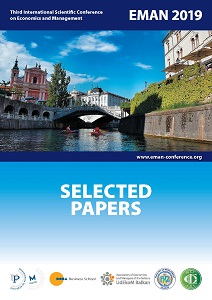DO DEVELOPING COUNTRIES FACE THE “MIDDLE INCOME TRAP”? EVIDENCE FROM A NOVEL UNIT ROOT TEST
DO DEVELOPING COUNTRIES FACE THE “MIDDLE INCOME TRAP”? EVIDENCE FROM A NOVEL UNIT ROOT TEST
Author(s): Aycan Hepsag, Barış Erkan Yazici
Subject(s): Supranational / Global Economy, Socio-Economic Research
Published by: Udruženje ekonomista i menadžera Balkana
Keywords: Middle income trap;developing countries;Hepsag Unit Root Test;
Summary/Abstract: One of the recent and attractive subjects of the economic literature is the “middle income trap”. The condition of middle income trap is defined for the countries which are categorized as middle income countries failing to move up to the high income category because of their slow growth rates. The present paper investigates the existence of middle income trap for developing countries which are Algeria, Belize, Brazil, Botswana, China, Colombia, Costa Rica, Cuba, Dominican Republic, Ecuador, Fiji, Gabon, Guatemala, Guyana, Jamaica, Jordan, Malaysia, Mexico, Paraguay, Peru, South Africa, St. Vincent and the Grenadines, Suriname, Thailand, Turkey and Venezuela, employing a novel unit root test with smooth break and nonlinear adjustment proposed by [3]. We follow the methodology of middle income trap proposed by [5] and determine the United States as the reference country. The data set involves annual gross domestic product (GDP) per capita of developing countries and the United States for the period from 1960 to 2017. Then, logarithmic per capita GDP gap series of each country is calculated in order to test the middle income trap for developing countries. The empirical results indicate that Belize, Botswana, Colombia, Costa Rica, Dominican Republic, Ecuador, Guyana, Jamaica, Jordan, Mexico, Peru, South Africa, St. Vincent and the Grenadines, Turkey and Venezuela are in the middle income trap. Therefore, we find out an evidence of a middle income trap in 15 out of 26 upper middle income countries.
Book: EMAN 2019 / 3 – Economics & Management: How to Cope with Disrupted Times – Selected Papers
- Page Range: 117-123
- Page Count: 7
- Publication Year: 2019
- Language: English
- Content File-PDF

